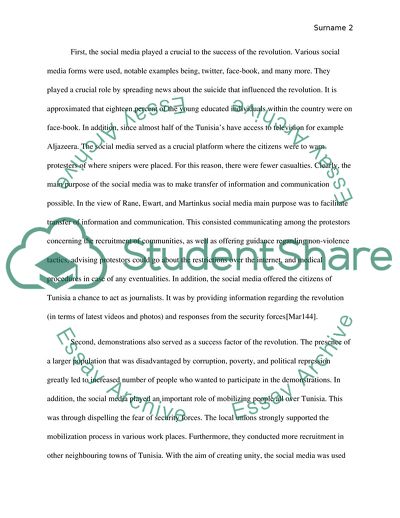Cite this document
(Success Factors of the Tunisian Revolution Case Study Example | Topics and Well Written Essays - 2000 words, n.d.)
Success Factors of the Tunisian Revolution Case Study Example | Topics and Well Written Essays - 2000 words. https://studentshare.org/history/1854332-success-factors-of-tunisian-revolution
Success Factors of the Tunisian Revolution Case Study Example | Topics and Well Written Essays - 2000 words. https://studentshare.org/history/1854332-success-factors-of-tunisian-revolution
(Success Factors of the Tunisian Revolution Case Study Example | Topics and Well Written Essays - 2000 Words)
Success Factors of the Tunisian Revolution Case Study Example | Topics and Well Written Essays - 2000 Words. https://studentshare.org/history/1854332-success-factors-of-tunisian-revolution.
Success Factors of the Tunisian Revolution Case Study Example | Topics and Well Written Essays - 2000 Words. https://studentshare.org/history/1854332-success-factors-of-tunisian-revolution.
“Success Factors of the Tunisian Revolution Case Study Example | Topics and Well Written Essays - 2000 Words”. https://studentshare.org/history/1854332-success-factors-of-tunisian-revolution.


